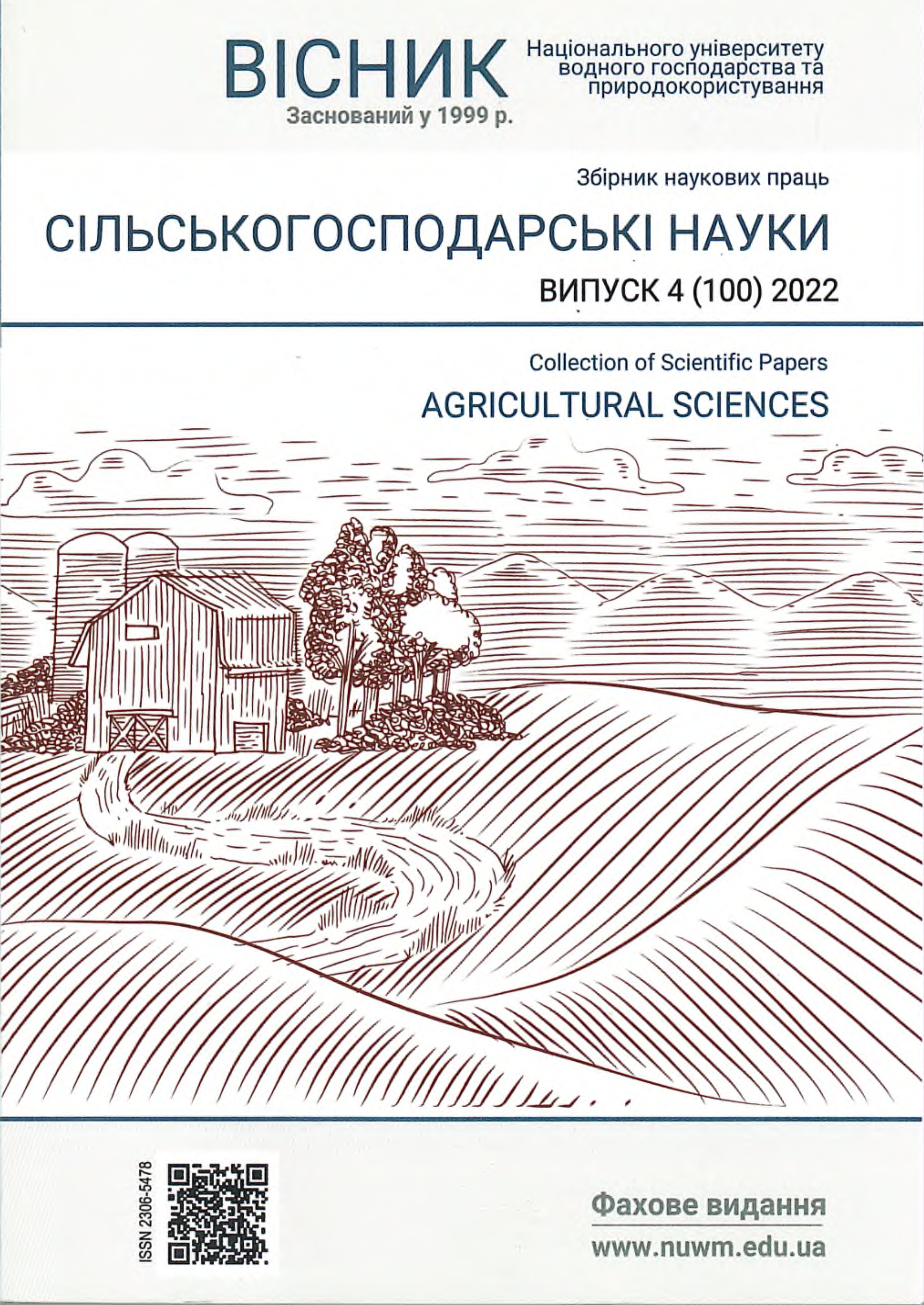INFLUENCE OF EROSION PROCESSES ON THE QUALITY OF SOILS OF THE MOUNTAIN ZONE OF THE TRANSCARPATHIAN REGION
Keywords:
mountain zone of the Carpathians, decentralization, structure of agricultural land, soil, acidity, humus, mobile compounds of nitrogen, phosphorus and potassium, erosion processes.Abstract
After the reform in the mountainous zone of the Transcarpathian region, there are currently 15 territorial communities, which have united 75 village and city councils, which include 130 settlements. In this area 80,2% are hayfields and pastures. Another 0,5% of the area is occupied by perennial plantations, and 5,21 thousand hectares or 19,3% of the total area is allocated for arable land. The main types of soils in the mountain zone are brown mountain-forest, mountain-meadow and turf-brown soil, crushed on eluvium-deluvium of Carpathian flysch and igneous rocks. By their nature, the soils of the mountain zone are infertile, primarily due to high acidity. According to agrochemical indicators, they are characterized by an average acidic reaction of the soil solution with a pH value of 4.81 units, an increased content of humus (3.74%), a low content of alkaline hydrolyzed nitrogen compounds (133.4 mg/kg) and mobile phosphorus (42.5 mg/ kg), the average content of mobile potassium compounds (91.7 mg/kg) and increased mobile sulfur (9.6 mg/kg). In general, the soils of the mountain zone are rated at 37 points, which puts them in the seventh class of low quality soils. The most susceptible to erosion processes are soils under row crops, in particular under potatoes and other roots. Withdrawal of eroded lands from agricultural lands is the most ecologically justified and economically feasible way of their use. In general, in all soil and climatic zones of the region, about 37.3 thousand hectares of arable land should be removed from intensive cultivation, of which 23.0 thousand hectares should be plowed and transferred to hayfields and pastures, and 14.3 thousand hectares should be afforested.References
Європейська економічна комісія: огляд результативності природоохоронної діяльності. ООН : Нью-Йорк і Женева, 2000. 232 с. 2. Зубець М. В. Сучасний стан ґрунтового покриву України і невідкладні заходи з його охорони. Агрохімія і ґрунтознавство : міжвід. тем. зб. спец. вип. до VІІІ з’їзду ґрунтознавців та агрохіміків України. Харків, 2010. Кн. І. С. 7–17.
Земельний Кодекс України. Агрокомпас. 2002. № 1. 31 с.
Технологія відтворення родючості ґрунтів у сучасних умовах / за ред. С. М. Рижука і В. В. Медведєва. Київ–Харків, 2003. 214 с.
Польовий А. М., Гуцал А. І., Дронова О. О. Ґрунтознавство : підручник. Одеса, 2013. 668 с.
Поп С. С. Природні ресурси Закарпаття. Ужгород : ТОВ «Спектраль», 2002. 296 с.
Природні багатства Закарпаття / кол. авт. ; упоряд. В. Л. Бондар. Ужгород : Карпати, 1987. 284 с.
Методика проведення агрохімічної паспортизації земель сільськогосподарського призначення / за ред. Яцука І. П., Балюка С. А. Київ, 2013. 103 с.
REFERENCES:
Yevropeiska ekonomichna komisiia: ohliad rezultatyvnosti pryrodookhoronnoi diialnosti. OON : Niu-York i Zheneva, 2000. 232 s.
Zubets M. V. Suchasnyi stan hruntovoho pokryvu Ukrainy i nevidkladni zakhody z yoho okhorony. Ahrokhimiia i gruntoznavstvo : mizhvid. tem. zb. spets. vyp. do VIII zizdu gruntoznavtsiv ta ahrokhimikiv Ukrainy. Kharkiv, 2010. Kn. I. S. 7–17.
Zemelnyi Kodeks Ukrainy. Ahrokompas. 2002. № 1. 31 s.
Tekhnolohiia vidtvorennia rodiuchosti gruntiv u suchasnykh umovakh / za red. S. M. Ryzhuka i V. V. Medvedieva. Kyiv – Kharkiv, 2003. 214 s.
Polovyi A. M., Hutsal A. I., Dronova O. O. Gruntoznavstvo : pidruchnyk. Odesa, 2013. 668 s.
Pop S. S. Pryrodni resursy Zakarpattia. Uzhhorod : TOV «Spektral», 2002. 296 s.
Pryrodni bahatstva Zakarpattia / kol. avt. ; uporiad. V. L. Bondar. Uzhhorod : Karpaty, 1987. 284 s.
Metodyka provedennia ahrokhimichnoi pasportyzatsii zemel silskohospodarskoho pryznachennia / za red. Yatsuka I. P., Baliuka S. A. Kyiv, 2013. 103 s.

